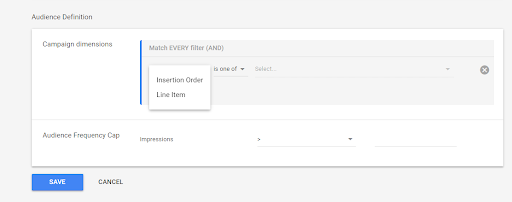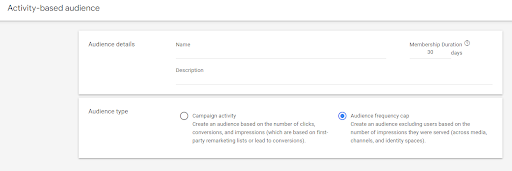In advertising campaigns, frequency determines the number of times the same consumer will be exposed to an advertisement in a certain time frame.
Setting an effective advertising frequency can help us to reach new audiences effectively, establish brand consistency, protect users from irritating ads and also save money for the Advertiser.
What is Frequency Capping?
Frequency capping is a technique that limits the no. of times each ad is shown to individual users in a given day, week, or month. It can also be called impression capping. Frequently showing the same ads or having a high frequency of ads can make ads less attractive to users. It can cause users to become less interested in reading or clicking ads, as a result, interaction and engagement subsequently drop. It affects your ROAS also.
It is a way to manage how many times advertiser ads appear in front of an individual. Most online platforms have simple ways to manage ad frequency at multiple levels which allows advertisers to control the ad shown to the users and reduce media waste.
For Example: Display & Video 360
In DV360, this platform allows advertisers to cap/control the frequency capping on multiple levels. There is the campaign level, insertion order, and line item level, where we can set the frequency as per advertiser and client requirements.
The main difference is that there is control at multiple levels, and advertisers can opt for many options as per their campaign needs like a lifetime of the campaign, months, weeks, days, etc.
In the above image as an example, at the campaign level, we can set the frequency capping according to the requirement of the campaign/client. At first, we as a campaign manager set the frequency capping lifetime of the campaign at the campaign level.
In the above image as an example, at the insertion order level, I could cap my frequency to 4 exposure per week.
Now in the above image at the line item level, we can limit that specific audience to see up to 2 exposures in a day. We can also set the frequency capping in a month, week, day, hour, or minute as per the campaign requirement.
Refer to Below Image:
It measures how many times someone in the target audience has interacted/served an ad to them. As digital marketing platforms are very dynamic and the ad frequency helps to know about the campaign’s effectiveness. Many advertisers are focused on building campaigns that encourage users to recall the brand and engage with it, rather than just counting clicks or impressions. Ad frequency helps advertisers know how many users were reached & how many times.
Ad Frequency can be determined by a simple formula:

The above formula has been used for a long time, but it becomes less reliable when applied to the digital advertising world. It has become very difficult to measure the ad frequency accurately, as the number of devices an average person uses has increased day by day. So, Implement the frequency cap based on best practice or your experience because it may vary by industry, on our specific target audience, the message we want to share, etc.
Why is Frequency Capping Important?
Every advertiser wants to promote their product and services on digital platforms, but overexposing the ad to the same audiences is not advisable. Also if a user checks the website once or twice, it doesn’t mean he/she should then see the advertiser’s ads all the time. As a result, this practice can cause decreased campaign performance. And sometimes even results in users completely ignoring the ads, also known as banner blindness which leads to generating bad impressions in the minds of the audiences.
Every ad campaign has a goal. It could be getting x number of conversions, clicks, or installs. If a single user sees 5 to 10 impressions a day without converting, then it’s not good for any advertisers. The advertiser is still paying for these wasted impressions. Thus limiting the number of times a visitor/user sees a particular ad can save the advertiser money. Which also increases the campaign ROI and causes low CTR.
The Pros of High Frequency:
Gaining high frequency increases the possibility of our messages sticking in the audience’s memory. Despite this, it also provides some additional benefits.
- Frequent messages allow us to build relationships with customers/users.
- Repetition helps to establish our brand, creating associations between our messages and our company.
The Cons of High Frequency:
- High frequency will be expensive
- High frequency can annoy users by seeing the same messages or ads repeatedly.
What should be the ideal frequency?
The optimal/ideal frequency cap will be different for digital advertisers with different goals. Generally, there is no thumb rule because every ad, every campaign, and every business/industry is different. In Display and Video 360, we can run 2 types of campaigns:
- Branding Campaign
- Performance Campaign
In these 2 types of campaign basis, we can set the frequency capping as per the KPI or client requirement.
For example:
If our ad campaign has the purpose of generating brand awareness, the no. of ad impressions will have to increase so that our ad doesn’t get lost in this digital competitive world. The more a person interacts with our ad, the more they’re going to recall our brand. In a branding campaign, the frequency cap will differ as per the campaign goal. But the best practice would be setting 4-7 per day at the line item level when we start the campaign.
But in a performance campaign where the advertiser’s goal is a conversion with spending less, it is recommended to set the frequency cap to 2-3 per day in line item level (Display & Video 360).
Frequency Cap Based Audience:
In Display & Video 360 there are many programmatic audiences targeting features based on that we as an advertiser not only find/target the right audience but also take action and understand based on the user’s intent.
So in the audience section, there are Activity-based audiences that allow advertisers to build audiences based on user activity across the campaigns. These audiences are of two types.
One is the Frequency Cap Audience where we can exclude users based on the number of impressions served across the campaign, deals, and inventory. It removes the audience that is not relevant to the business or if you don’t want to target right now;
Frequency cap-based audience means – if a user crosses your campaign did ‘n’ no. Of impressions that didn’t click or clicked; would you want to showcase an ad to them again and again?? We can decide what ‘n’ can be 20,40,50 or 100. That particular criterion is as imp as targeting criteria. So if a user through a particular IO or LI has done ‘n’ impression, we can exclude them from the campaign within a max duration of 30 days. This audience doesn’t include Trueview ads or video ads. This is for (display, video, install, Gmail, true-view, and audio)
Frequency Capping Audiences gives us better control over user exposure to our campaign by negatively targeting users.
Here’s how frequency capping audience works:
At the campaign level, we specify a list of an Insertion Order or Line Items where we want to exclude the frequency capping audience, along with an impression limit. Once a user has reached the impression limit, they will be added to the frequency-capping audience list.
Step-1
Navigate to campaign level > navigation panel.
Click on Audiences> All Audiences> New Audience> First-party data.
First-party data > Activity-Based Audiences.
There are two types of audiences available in ‘Activity Based Audiences’. [Select the Audience Frequency Cap option from it].
Step-2
Audience frequency capping is available at both IO and LI levels.
Set the specific impression frequency cap for relevant IO/LI’s.There are two options available for setting the frequency impression cap:- [Greater than>], [Greater than Equal To >=]

Frequency Capping Best Practices.
There is no magic answer for the best practice of frequency capping. Setting a frequency cap for online advertising campaigns is always recommended in most situations unless the goal is bombarding users with ads. The optimal ad frequency is very hard to determine and may depend on the type of campaign, campaign objective, and the available inventory.
Best practices are
- Set frequency caps at all levels – Campaign, IO, and LI to build frequency as required. Setting it at all 3 levels helps in better control
- Use a broader audience if the lesser frequency is to be built but use a narrow audience when more frequency is to be built
- For performance, campaign frequency should be controlled by showing the ads multiple times might not lead to conversions but is a waste of spending while branding campaigns start building reach and frequency from the beginning to induce brand recall among customers. But keep in mind bombarding the user with a lot of ads leads to frustrated users/blocking of ads so find out your ideal frequency based on your industry
Case Study: How does Tatvic help a real estate client wanting to promote their app, and build a frequency of 6 in two months using DV360?
Tatvic took up the challenge of building a frequency of 6+ using the DV360 platform. Below is the process followed and took optimizations steps to meet the frequency goal:
- Allocated the highest budget to YouTube Line-Items to build reach as well as Frequency
- The campaign was strategized in such a way that each building was the focus during the initial phase of the campaign and the focus was shifted to frequency building once enough reach was built as per the plan. This helped in effective reach and frequency building.
- Skippable 10s videos were run to build audiences and line items based on those audiences (viewer lists) were created to build frequency Skippable ads increased the size of the viewer list and the viewer list helped build frequency at a faster rate
- More than 50% of the budget was allocated to users who have already seen the ad has helped with building the frequency at a faster pace
- At an overall level, focusing on Bumpers and Skippable Line Items helped with increasing the frequency and size of the viewer list respectively
- Strategies like google audiences, and Channel List helped in increasing reach initially. Post that audiences and channels were optimized to build more frequency.
- Individual cities-based optimizations and layering of keywords and placements were done to reduce the pace of reach and increase the frequency
- CPMs were optimized based on the phase of the campaign so to build reach and frequency
- Starting CTV LIs also helped increase frequency.
All the above steps helped in achieving the frequency of 6+
Conclusion:
In conclusion, Frequency capping can help manage your advertising efforts because it limits the number of times a user sees an ad, which ensures that your ads won’t be annoying and therefore won’t lose your clicks. Keeping your costs in check and improving ROAS.
Do let us know if you want to know more about Frequency Capping and its impact on your campaign efficiency.







